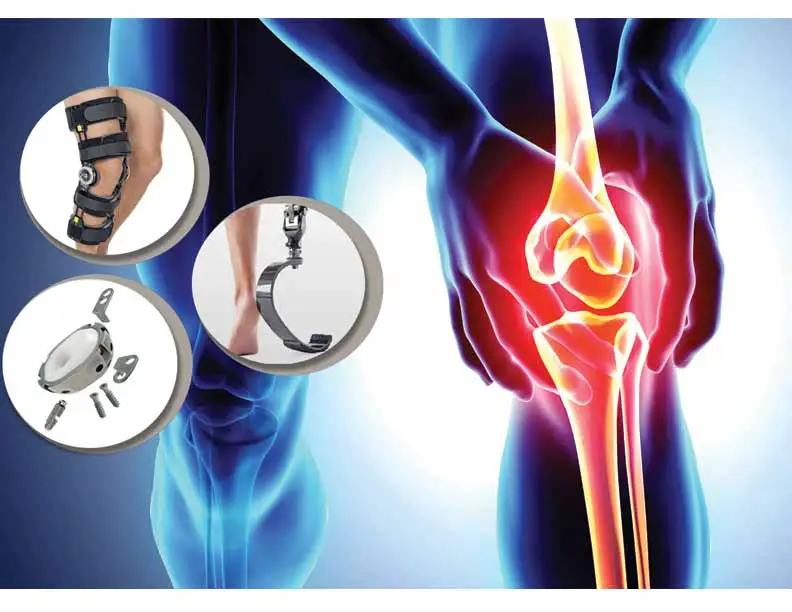Orthopedic Health in the Digital Age: In today’s fast-paced digital world, our reliance on technology has dramatically increased, leading to new health challenges that impact our orthopedic well-being. One of the most prevalent issues associated with excessive screen time is “tech neck,” a term that describes the neck and shoulder pain resulting from poor posture while using digital devices. Dr. Gautam Gupta, a leading orthopedic specialist, recognizes the importance of addressing these modern challenges to maintain optimal musculoskeletal health. This article delves into the effects of technology on posture, the implications of tech neck, and practical strategies for prevention and management. We can discuss more about “Orthopedic Health in the Digital Age”

Understanding ‘Tech Neck’
1. What is Tech Neck?
Tech neck is characterized by the discomfort and pain that arise from the prolonged forward head posture associated with looking down at smartphones, tablets, and computers. As individuals spend hours hunched over screens, they may experience a range of symptoms, including:
- Neck pain and stiffness
- Shoulder pain and tension
- Headaches
- Upper back discomfort
- Reduced mobility in the neck
Dr. Gupta emphasizes that the anatomical strain caused by tech neck can lead to chronic pain and exacerbate existing musculoskeletal issues.

The Impact of Poor Posture
1. The Importance of Good Posture
Good posture is crucial for maintaining spinal alignment and overall musculoskeletal health. When the body is aligned correctly, the muscles and joints work efficiently, reducing the risk of injury and discomfort. However, poor posture, especially during prolonged periods of device use, can have significant negative effects: Also can visit the best orthopedic and spine treatment center in Gwalior. We are all powered by Argusdna. We can discuss more about “Orthopedic Health in the Digital Age”
- Spinal Misalignment: Prolonged poor posture can lead to changes in spinal curvature, resulting in conditions such as lordosis (excessive inward curvature of the spine) or kyphosis (excessive outward curvature).
- Muscle Imbalances: Poor posture often causes certain muscles to become tight and overactive while others weaken, leading to imbalances that contribute to pain and dysfunction. We can discuss more about “Orthopedic Health in the Digital Age”. We can discuss more about “Orthopedic Health in the Digital Age”
- Joint Strain: Misalignment and muscle imbalances can place excessive strain on joints, increasing the risk of injuries and degenerative conditions over time.

Recognizing the Symptoms of Tech Neck
1. Common Symptoms to Watch For
It’s essential to recognize the signs of tech neck early to prevent further complications. Common symptoms include:
- Neck and Shoulder Pain: Dull aches or sharp pains in the neck and shoulder regions, particularly after extended device use.
- Headaches: Tension headaches that may result from muscle strain in the neck.
- Numbness or Tingling: Sensations in the arms or hands may indicate nerve compression due to poor posture.
2. When to Seek Professional Help
If symptoms persist or worsen despite self-care measures, it is crucial to consult an orthopedic specialist like Dr. Gupta. He can provide a thorough evaluation and develop a personalized treatment plan to address underlying issues. We can delve deeper into “Orthopedic Health in the Digital Age”
Strategies for Managing and Preventing Tech Neck
Dr. Gupta advocates for proactive measures to combat the effects of tech neck. Here are practical strategies to improve posture and reduce discomfort:
Read More:
1. Ergonomic Adjustments
Creating an ergonomic workspace is essential for promoting good posture. Consider the following adjustments:
- Screen Height: Position your computer screen at eye level to avoid bending your neck forward. Use a stand or stack books to elevate your device.
- Chair Support: Choose a chair that supports the natural curve of your spine. Ensure your feet are flat on the floor, and your knees are at a 90-degree angle.
- Keyboard and Mouse Position: Keep your keyboard and mouse at a comfortable height to minimize strain on your wrists and arms.
2. Frequent Breaks
Taking regular breaks is vital to prevent stiffness and discomfort. Dr. Gupta recommends:
- The 20-20-20 Rule: Every 20 minutes, look at something 20 feet away for at least 20 seconds to reduce eye strain and encourage better posture.
- Stretching Breaks: Incorporate brief stretching exercises every hour to relieve muscle tension and promote circulation.
3. Posture Awareness
Being mindful of your posture throughout the day can help prevent the onset of tech neck. Tips include:
- Check Your Alignment: Regularly assess your posture while sitting and standing. Keep your shoulders relaxed, head aligned with your spine, and avoid slouching.
- Use Reminders: Set reminders on your phone or computer to check your posture and take breaks.
4. Strengthening Exercises
Engaging in exercises that strengthen the neck and upper back can improve posture and alleviate discomfort. Dr. Gupta suggests incorporating the following exercises into your routine:
- Chin Tucks: Gently pull your chin back toward your neck while keeping your shoulders relaxed. Hold for a few seconds and repeat several times.
- Shoulder Blade Squeezes: Sit or stand with your arms at your sides. Squeeze your shoulder blades together and hold for a few seconds, then release. Repeat several times.
- Neck Stretches: Gently tilt your head to one side, bringing your ear toward your shoulder. Hold for 15-30 seconds, then switch sides.
5. Yoga and Pilates
Practicing yoga or Pilates can significantly enhance flexibility, strength, and body awareness. These disciplines often focus on proper alignment and posture, making them excellent choices for preventing tech neck.
The Role of Professional Care
1. Physical Therapy
If tech neck symptoms persist, seeking professional care is essential. Physical therapy can help address muscle imbalances and improve posture. A physical therapist can develop a personalized exercise program, incorporating strengthening and stretching techniques tailored to your needs.
2. Chiropractic Care
Chiropractic adjustments can also be beneficial for correcting spinal misalignment and relieving tension associated with tech neck. Dr. Gupta may recommend working with a qualified chiropractor to support your orthopedic health.
Conclusion: Orthopedic Health in the Digital Age
As technology continues to shape our daily lives, it is crucial to prioritize orthopedic health to mitigate the impact of tech neck and poor posture. Dr. Gautam Gupta’s insights underscore the importance of making conscious lifestyle adjustments to protect our musculoskeletal system.
By creating ergonomic workspaces, incorporating regular breaks, staying mindful of posture, and engaging in strengthening exercises, individuals can significantly reduce the risk of tech neck and enhance overall orthopedic health.
If you are experiencing symptoms of tech neck or have concerns about your posture, consider reaching out to Dr. Gautam Gupta at the Bone and Joint Clinic in Kolkata. His expertise can help you navigate the challenges of maintaining orthopedic health in the digital age.
Contact Information:
- Phone: +91 62917 71106
- Email: contact@bonedoctorgautam.com
- Address: 591, Tagore Park Rd, Tagore Park, Kasba, Kolkata, West Bengal 700039






